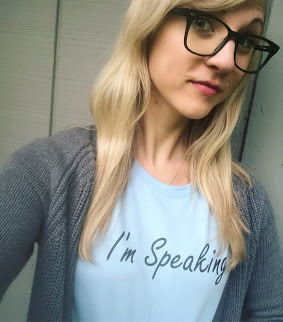Is going back to “normal” a valid goal? Or should we learn from our experience in order to grow and change?
The last year and a half has caused a lot of havoc in education. We had to learn new ways to deliver instruction, and we had to face important equity issues with a crisis igniting urgency. What did we learn from this?
We asked our bloggers these questions: We keep hearing “back to normal,” but is that what it is? Is that what we want? Here are their responses:
Gretchen Cruden
Going “back to normal” may be a comforting thought, but I hope we don’t—at least not completely. There have been some incredibly wonderful new changes that have arisen in education due to the pandemic. I am beyond thrilled that an emphasis on SEL is occurring across the state with…wait for it…actual money to support it! We are starting every day with mindful breathing and stretches now. Life feels good!

I am also grateful for the opportunity for more educators to explore the ways in which technology can play a powerful in personalized instruction. And, shhhhh…but I am also over having my students sit in pods ever again. Short sets of direct instruction in rows with break outs for small group interactions will forever be my new norm, as I can see where this serves the learning brain the best.
Jan Kragen
One of the best parts of the day is Circle Time. We spread out our chairs in a big circle around the perimeter of the room. I have a karaoke machine, so I use the microphone as our talking stick. It’s so much easier to hear kids talk through their masks with an electronic boost!
This year every one of my students has a ChromeBook. That’s been a learning curve, just in terms of logistics. Every ChromeBook goes home every night and gets charged at home. They return to school every day, get out of backpacks, and into desks. I’ve worked much harder on helping kids keep their desks organized this year because I can’t have them stuffing things on top of their ChromeBooks!

Classroom…It’s paperless
and super easy.”
At the same time we’ve switched to Google. For decades I’ve taught students using all of Microsoft Office. Trouble is, not everyone had MS at home, so files would go home as MS files and return as RTF or OTD or PDF files–or even pictures of files. Sometimes I could do electronic comments and sometimes I couldn’t. Now everything is in Google Classroom. I post the assignment, kids hand it in, I add comments and a grade. It’s paperless and super easy.
What I’m missing now is the ability to have lunch with small groups in my room. That’s been so useful in the past for small groups who want to have a writers group or who share another common interest.
Lynne Olmos
I often reminisce about the old days, back when I wasn’t shocked to see what a seventh-grade student looked like without their mask. That said, I think we unveiled issues concerning equity and emotional support over the last year and a half.
We have seen the need to ensure access to technology for all; however, we started this year without seeing to that. I feel that the hope was that we would not have to get ChromeBooks and hotspots out to those who needed access. We have less capability to provide this access than we did last year! Hope of normalcy set us up for a possible disaster, should we have to go remote at some point.

Some of us shifted our practice to take care of our vulnerable students during a time of crisis. Personally, I changed my grading practice and relaxed a lot of traditional discipline and “classroom expectations” to meet kids where they were and give them a safe place to feel respected and supported. I won’t go back to normal, because normal wasn’t good enough for the kids.
Denisha Saucedo
NOPE, we did not learn. In fact we took three very LARGE steps backwards. Education may never be the same. This is not meant be be negative, but reality is that we as a society may never be the same.

From year to year we know that we teach the students in front of us. Well, those students had to do (or not) school online for over a year. It is said that you need to repeat something 66 times to create a new habit, well you can triple that. New habits were formed. Students and staff have new needs. Families and communities look different, therefore the education has to look different. Educators are also dealing with trauma and that in itself has caused them to grab onto bits and pieces of the way education “use to look.”
Emma-Kate Schaake
I’d love to have seen a full scale reimagining of education after last year, but I know that kind of revolution needs to be more of a slow burn than a five alarm fire. What I have seen in our building is a dedicated focus on student mental health, systems of support, relationships, and community.

We seem to be coming in with a strong “kids over content” lens and I think that’s absolutely essential. Some students haven’t been in “real” school in a year and a half. Many have crippling social and academic anxiety.
I fully believe that students didn’t “lose learning,” but we’ve all been changed by the last year and half. So, education should look different going forward to meet students where they are and provide what they need, academically, personally, and holistically.
Your Turn: Should we be trying to get “back to normal?”
In your opinion, what should education look like going forward? What changes should we embrace? What did we learn? What are the new priorities we need to acknowledge? Share your thoughts with us.